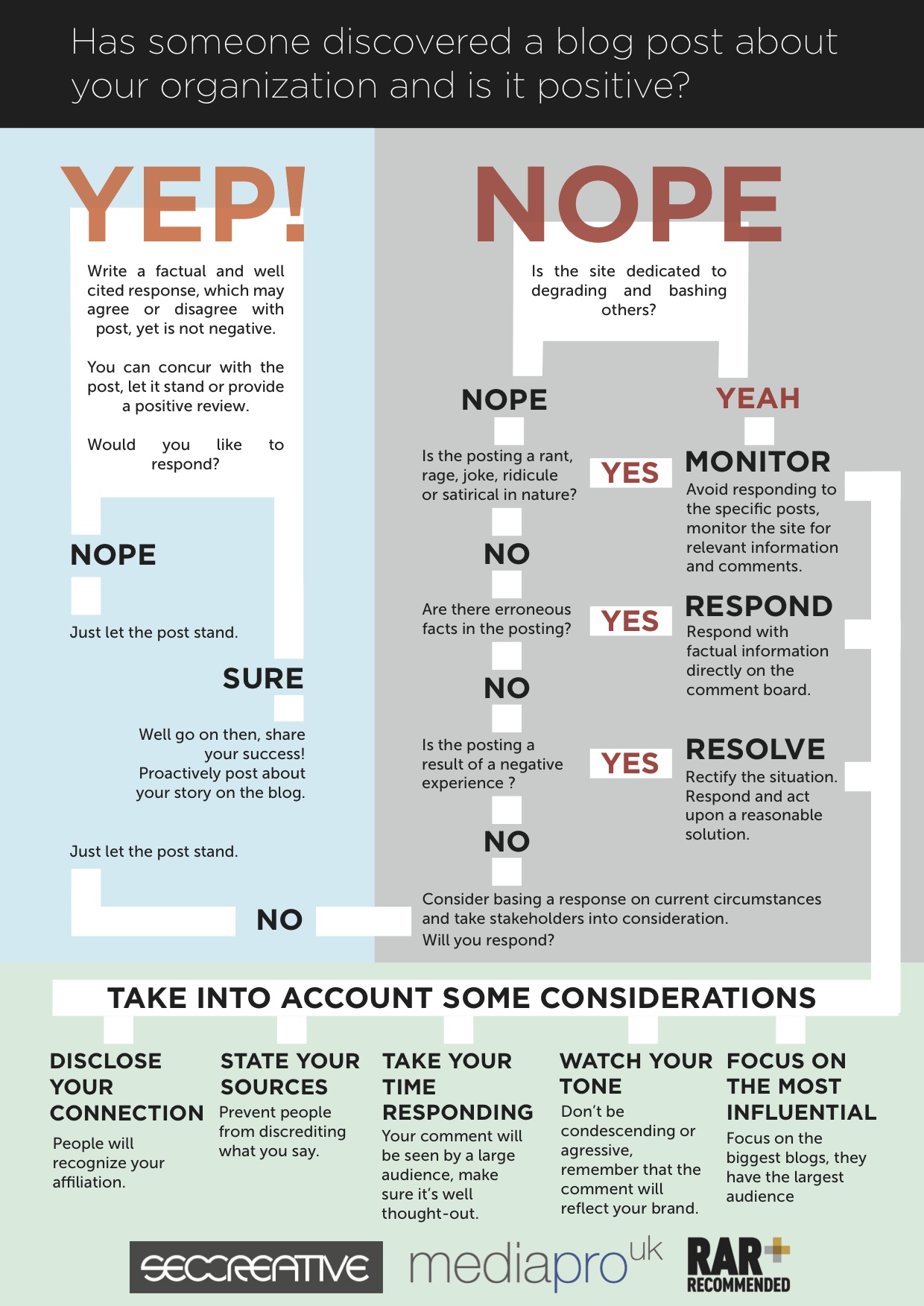How to Protect Your Brand Online
 Your content strategy should be a great representation of your brand, and this is easy to control when you are writing and editing it for yourself. But what do you do when other people start to write about you?
Your content strategy should be a great representation of your brand, and this is easy to control when you are writing and editing it for yourself. But what do you do when other people start to write about you?
SEO copywriting on your own site can help get you recognised, get traffic and get noticed, but with that level of exposure you do sometimes end up in the firing line.
- Your Brand
Your brand could be your business, your website, or your personal brand, and as such you need to represent your brand effectively and protect it. By having a blog or any kind of social media presence you open yourself and your brand up to conversations and sometimes criticism.
It doesn’t matter who you are, whether you are an international blue chip organisation or an individual with a blog, you have a reputation to protect – and if there is a chance that someone else is writing about you, then you need to know about it.
- Monitoring Your Brand
You can easily use social network tools such as Sprout Social and even Google Alerts to keep an eye on your brand and website mentions. You can also use more advanced packages that include sentiment tracking, but for most people the free or cheaper options are enough.
Although you may be in a competitive vertical, particular keywords such as ‘brand name’ scam can be very easy to rank well for and ‘Google bomb’ your own site. Keeping an eye on your mentions is just as important as focusing on your own SEO and content writing.
“No publicity is bad publicity….”
The old saying of ‘no publicity is bad publicity’ no longer applies: it used to be that nobody cared what people were writing about them, as long as they were getting enough column inches.
Now we do care about what people are saying…why?
Traditional media was disposable. An article would be written, read and discarded, while your other brilliant work some would be archived in some library to collect dust. So it was no wonder people didn’t care as much about reputation management.
If you read a bad piece in a newspaper, you may remember the brand but the details are a bit fuzzy, therefore the brand became more recognisable: the next time you come across them, be sure to note the operative writer that you remember them, and this time may be a more favourable situation.
Information turns into discussion
The other aspect of digital media compared to traditional media is the social element: we now read something, share it, tweet, discuss through comments, and even blog about it. Therefore one bad comment may turn into pages and pages of search engine results about the subject with various opinions.
If something is shared in a newspaper or another form of print, then you can guarantee it will be recorded with pictures, digital copies and social media.
The Good, the Bad and the Ugly
You can categorise blogs or articles about your brand in 3 different ways:
1. The Good
These are the best types of blogs about your brand: some lovely person speaking favourably about your brand. These are just as important to keep an eye on as negative brand discussion, as these are a great opportunity to share.
You can also reach out to the writer and get a link back to your site from the blog, or even get valuable content from them to quote in your own copywriting strategy.
2. The Bad
Bad reviews and blogs about your brand are very damaging to your brand, but they may also provide you with some legitimate feedback on your product or services. Don’t shy away from bad articles – instead, embrace them and see if you can resolve the issue and turn it around.
The quicker this is dealt with the better, so make sure you are monitoring your brand closely in the search engines and on social media.
3. The Ugly
Ugly content is content that is often badly written – typically an emotional response, or defamatory in nature. These are more difficult to handle and can often be very hurtful to you. It is very important not to take this content to heart and remain detached when dealing with it.
Unfortunately this ugly kind of content style is often shared quickly. This is because it appeals to people on a more emotional level, is often sensationalist, and can cut very close to the bone.
This needs to be handled sensitively. If you can reason with the original author then do – and try to offer assistance to change their opinion. If they are the type of writer that does this for fun they may not be easy to reason with. In this case you may need to try other methods to protect your brand.
At SEO Creative, we have produced a simple flow chart to help you deal with content discussing your brand:
 About the Author ~ Sadie Sherran
About the Author ~ Sadie Sherran
Sadie Sherran is the owner of Media Pro UK Ltd, holding company of SEO Creative, a digital agency in the UK. Sadie is head of online marketing and specialises in SEO, SEM, CRO and Reputation Management. Sadie is a big fan of pie and chips, spends a lot of time on Twitter(@seobelle) and is often found getting tips from the SEO Copywriting blog.
Hurry! There’s just a few days left to apply for the Copywriting Business Bootcamp that starts on July 16th. Sure, it’s an investment – but if you follow the program, you’ll be able to make your investment back in three months or less. Here’s how to get started…
photo thanks to Picture Taker 2


That chart’s going to come in handy! I had an experience of this sort of thing a few years ago when I was foolish enough to write a piece that was going to be used as a comparison piece for some ultra-cheap copywriting service. They highlighted the fact that I charged a lot more for my copy and said that their cheaper version offered better value…to my amazement, lots of other copywriters came out of the woodwork to defend my work and criticise the cheap version and service. So sometimes, you don’t even need to defend yourself, because others will do it for you :)
Shouldn’t have read that About the Author part…I want pie and chips now.